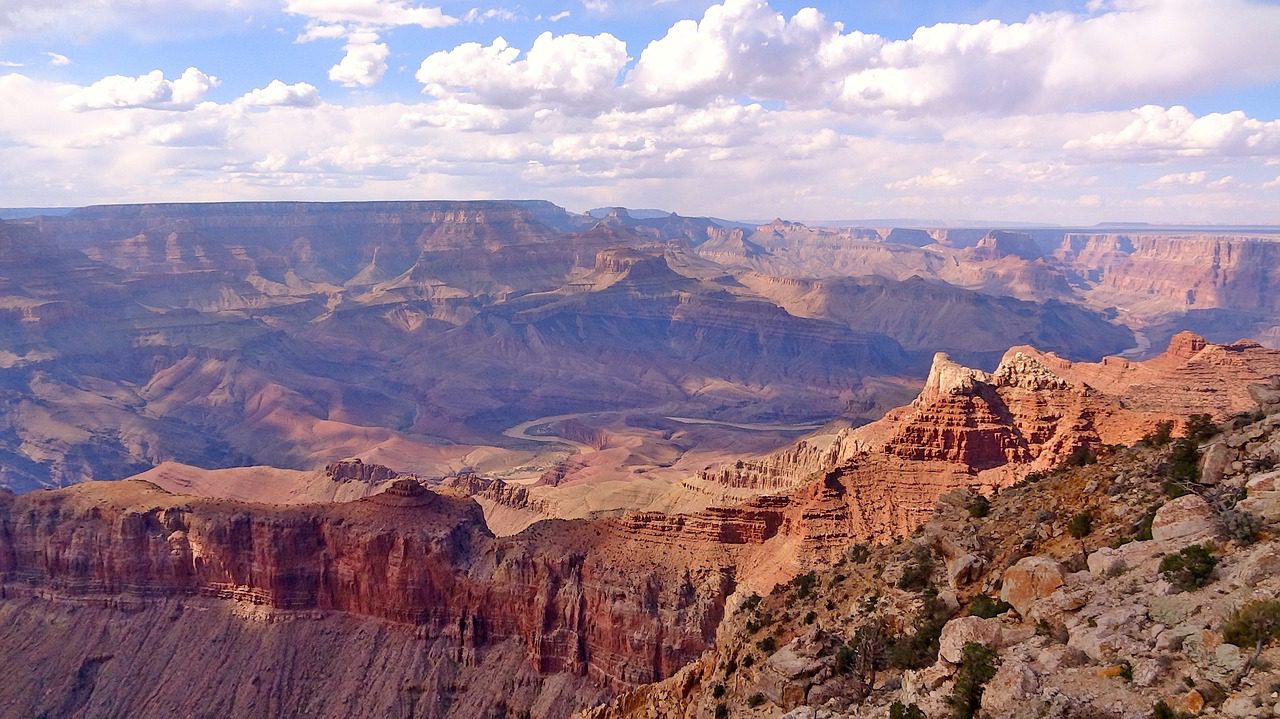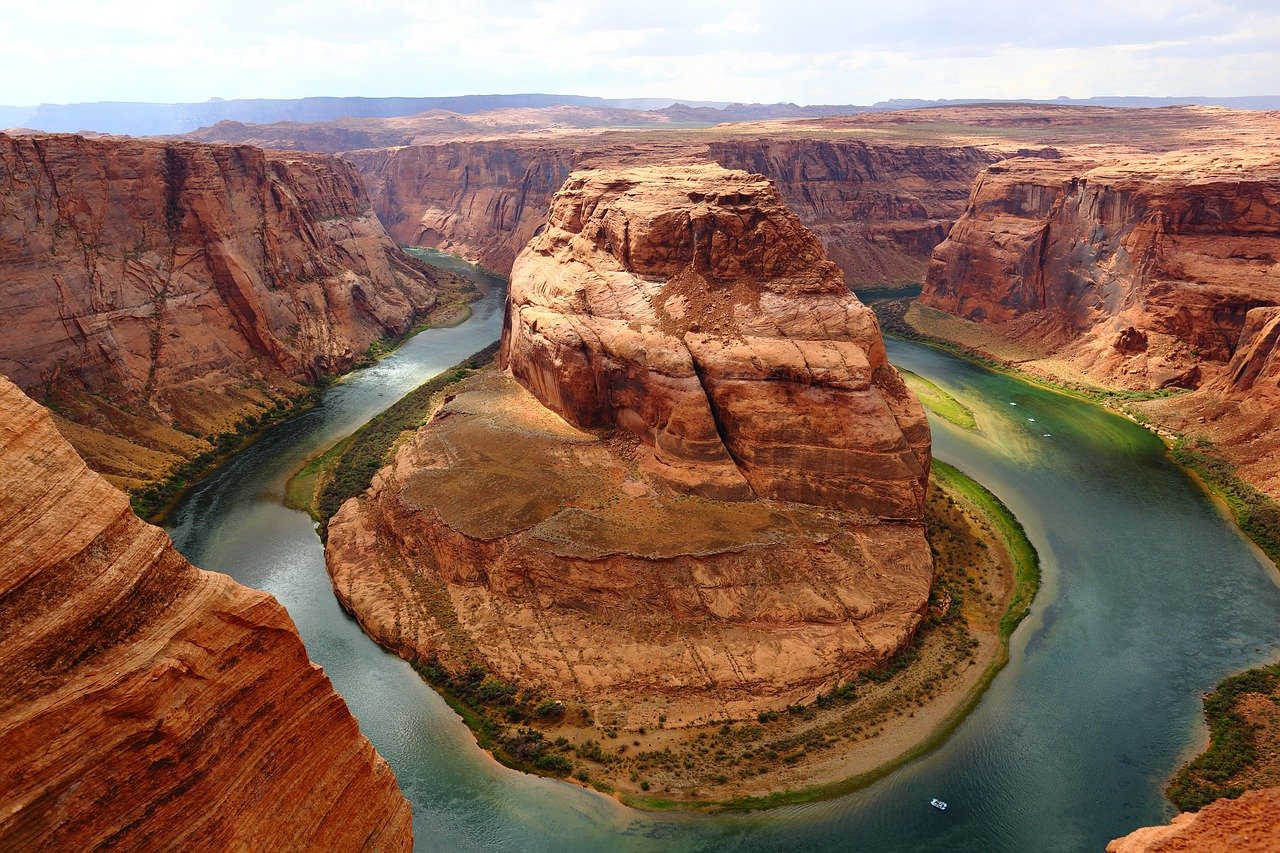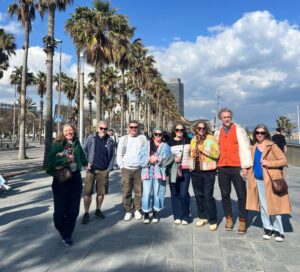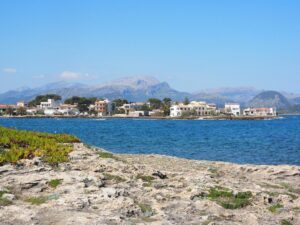The Grand Canyon USA – Destination Guide

A wonder of the world with views that will fill you with awe and a sense of adventure. The Grand Canyon in Arizona is one of our Bucket List adventures-of-a-lifetime – here is what you can see and do during a trip to this part of the world.
Image by neufal54 CC0
Best Time To Go Travel To The Grand Canyon
Did you know that May is the best time of year to take a trip to the Grand Canyon on a kayak adventure? The skies are clear and the temperatures are high – which means you’ll soon warm up if you take an unexpected dip in the chilly waters! The rainfall is low between April and June, but things start getting really hot at the end of April when the mercury rises above 30. June, July and August temperatures hover around 40 – the only place to be at this time of the year is in one of the dark bars in the nearby city of Phoenix, a top travel tip from our blog on Wilderness City Breaks in The USA.
Things To Do At The Grand Canyon
At 270 miles long and 18 miles wide, there is a lot to discover at the Grand Canyon. Much of it sits with the Grand Canyon National Park, but there are bits on Native American land.
Grand Canyon Village – It’s the most popular entrance to the park, and it is one of the best places to view the canyon, from Yavapai Point. There is also a Geology Museum here and a shuttle bus that gives visitors great views, especially good if visiting just for a day or two or with children.
South Rim – The South Rim is lower than the North Rim, so generally accessible all year round as the roads aren’t often closed by snow in the winter. It is also closer to towns which makes it a more popular side to visit. There is a 25 mile stretch that is worth seeking out, popular for scenic desert views.
North Rim – The North Rim is less accessible and less visited because there is only one road to get you there at it’s usually only open mid-May to mid-October. Due to being a bit higher, the views from the North Rim are said to be more impressive, especially Cape Royal which offers the widest views.
Did you know? There is only around 17 miles separating the North Rim from the South Rim of the Grand Canyon – however, it’s a 5 hour trip covering 220 miles between the two!
Grand Canyon Skywalk – Another way to get an impressive view of the impressive vistas is to head to the man-made Skywalk. A horseshoe-shape reinforced glass-bottomed walkway that hangs out over the canyon. Certainly not for the feint hearted!
Kayaking & Rafting – We know the Grand Canyon is big, but did you know that The Colorado River sits a whole mile below one of the rims? There are many ways to enjoy the Colorado River and the views of the Canyon from below, from smooth-water motorised trips to level IV white-knuckle white water rafting adventures. There is even an incredible 12 day adventure that covers 200 miles taking those with enough experience through the varied terrain both on the water and on land.
Hiking & Trekking – The hiking season is long at the Grand Canyon, with only the hottest summer months off the agenda for most people. Winter is a favourite time because there is more of a chance that you can soak up the spectacular scenery all by yourself. The big question is usually what do you want to take in, as this will determine when to go. The bottom of the canyon is arid and hot, and the tops of the rims are home to plentiful forests, a full four seasons with the summer bringing intense thunderstorms. The advice is to NOT BACKPACK WITHOUT A GUIDE who specialises in desert hiking in the summer months if down in the canyon.

Image by KeYang CC0
How Safe Is The Grand Canyon?
The biggest risks at the Grand Canyon are falls, heatstroke, dehydration and drowning. The safety advice is to take care when you go, so pick the right season for your activity (remember that there is a vast difference in temperature and terrain between the top and bottom of the canyon, and north rim and south rim!), and never underestimate what mother nature can do with weather! Flash floods are a real danger here, and even the most seasoned hikers have to be aware that the heat here can be fatal. Dress in layers, and always carry plenty of water with you whatever the time of year – the canyon area is huge and remote.
Of course, make sure that you get yourself some travel insurance before you visit.
Not only can it offer a lifeline in the event of illness or injury, it can offer peace of mind with repatriation if you need it and protect from extremely costly medical bills in the US. We even offer specialist insurance for sports and activities on holiday so that you are covered for hiking, trekking, kayaking and white water rafting adventures.






